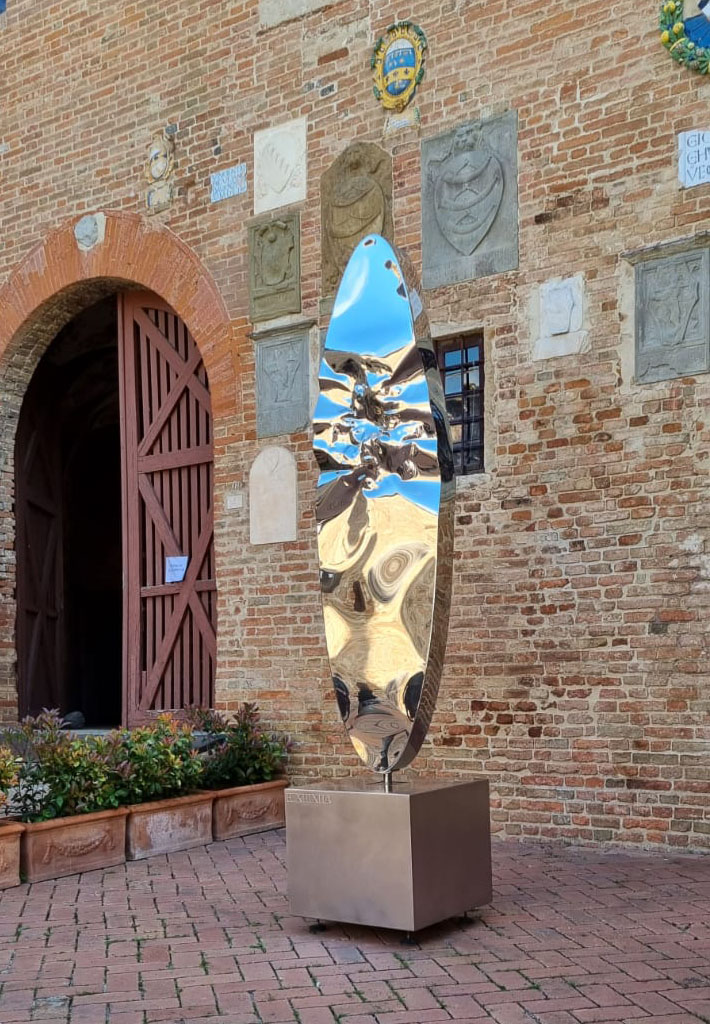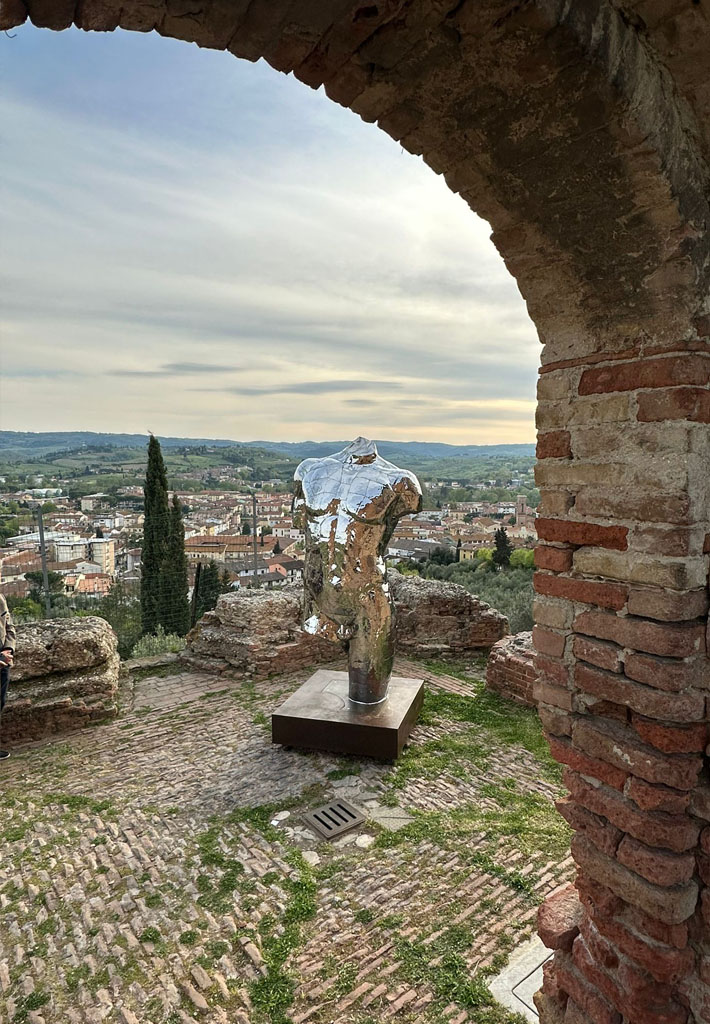22 April | Certaldo
OPENING Saturday 22 April 2023, 4,30 p.m.
22 April – 10 September 2023
The Municipality of Certaldo with the patronage of the presidency of the Regional Council of Tuscany hosts the exhibition of the artists of Albanian origin Helidon Xhixha and Milot, “Fusions of light“, curated by Elena Violetti.
The inauguration was held on Saturday 22 April in the presence of the mayor Giacomo Cucini, the Councillor for Culture Clara Conforti and the regional councillor Enrico Sostegni. The Albanian ambassador in Rome Anila Bitri Lani spoke for the occasion.
The exhibition conceived for the city of Certaldo, which develops between the streets of the medieval village and the halls of Palazzo Pretorio, is a conceptual journey full of meanings, where light becomes matter, form, color. It is marked by closely interconnected moments and consists of a succession of unexpected situations, in which the environment is shaped and shaped by the artists to allow the viewer to perceive the works from new and different perspectives.
It is a double solo exhibition that sees the works of two artists with different expressions and paths, figures with different dispositions, but accompanied by the same magnificent obsession, that for light.
Xhixha models it by making it pure matter, Milot with the light of his “Mediterranean” poetizes.
Light, despite its apparent incorporeality, is the founding element of the concreteness of the universe. It is the physical entity that allows the eye to see but can also be understood as truth reached through the unveiling of evidence. Here it is that in a more generic sense, light is a symbol of clarity, of rightness, of authenticity, what human reason tends to as liberation from intellectual, spiritual and moral unawareness.
Helidon Xhixha is one of the most internationally recognized and appreciated artists; Light is the characteristic feature of the creative path and the dialogue with it guides his poetic universe.
The essence of light has always been the main object of his study and stainless steel, his preferred medium, an industrial, modern, resistant material, allows him to translate his research on light into its interaction with matter. The moment the light is reflected on it, it is transformed into a symbolic presence and dancing in a game between physical and spiritual reality, it itself becomes living sculptural material.
The works are conceived as “mirrors” and become the place of the double, understood as an interrogation of the multiplicity of human nature. They directly involve the viewer and, like open questions, allow us to search for every deepest aspect of reality.
For the artist, the sense of making monumental art in our contemporaneity means bringing art back out of museums, to make it public and celebrate the social moment we are living in. It does not limit itself to contemplating the existing but makes it active, a concentration of reality and a shorthand of sensation. Xhixha tries to preserve, in the tragedy of this world, that glimmer of freedom and beauty that envelops things in a very deep light.
A warm, Mediterranean light that envelops every element pervades us when we observe Milot’s works.
Always attracted to informal art, Milot uses color as poetry; he writes about his origins and roots, the strong bond with his land and Albanian culture with a language characterized by a nonchalant eclecticism.
The word “Mediterranean” recurs constantly in the titles as if it were the actual fulcrum around which everything revolves and the artist interprets the “Mediterraneanness” with great power and intensity, freeing his creative energy through large abstract layers impregnated with lights and colors, tonal passages and sign compositions, giving substance to visual suggestions.
With the beauty and ingenuity of form, Milot develops the eternal poetics of the key that becomes his characteristic code to illuminate, in a metaphorical sense, the mystery of human instincts.
Milot’s is a continuous passage from inner soliloquy to dialectical interaction, not free from contamination. In the full spirit of hospitality, according to an approach of proximity, which neither distinguishes nor separates but, on the contrary, is based on the values and principles of humanity, respect and solidarity, the inner movement becomes a universal heartbeat.
In each of Milot’s works one can identify a rich iconographic itinerary coming from the past visual tradition, capable of substantiating the depth of its meaning and opening up new perspectives of analysis. His is an incessant questioning of contemporaneity, understood as a place of living, which leads us to rethink being, today, men on Earth.



